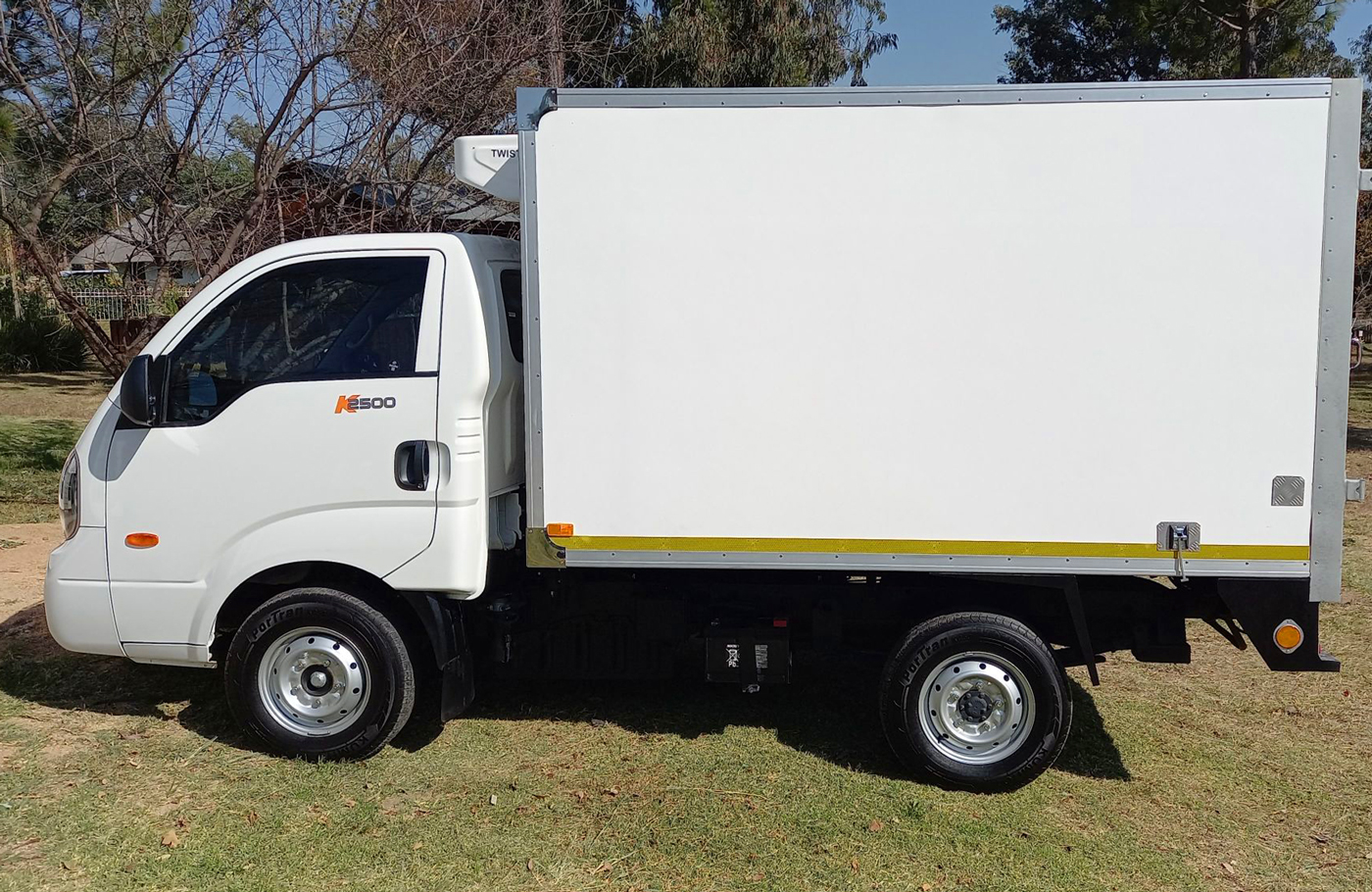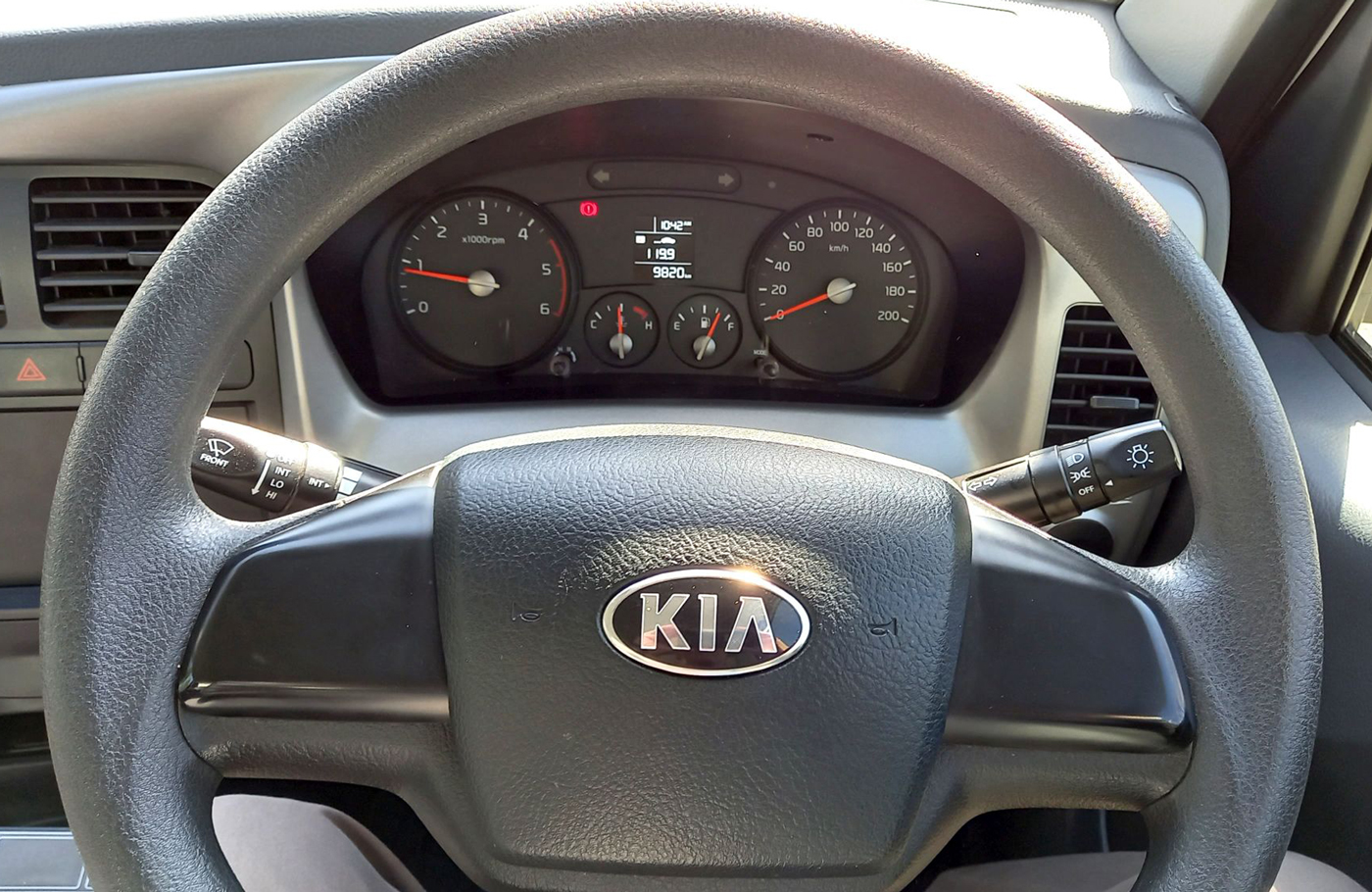Low fuel consumption makes Kia K2500 a winner
Low fuel consumption makes Kia K2500 a winner
The Kia K2500 is perhaps less well-known than its more powerful sibling, the K2700. After driving one, however, COLIN WINDELL says there seems to be little to quibble about in terms of ability and efficiency.
Our test unit came with a neatly fitted refrigerator unit and, although it was never quite loaded to its 1,000kg capacity, it was aimed at a few severe hills on the test route to see how it coped and what effect these would have on fuel consumption.
The Kia K2500 has an in-line four-cylinder DOHC turbocharged diesel engine that is happy to run on any of the three locally available grades. It produces 96kW of power at 3,800r/min and 255Nm of torque between 1,500 and 3,500r/min. The first figure is especially important, as it delivers the early “grunt” vital to smoothly get a full load up and moving.
Driving through a six-speed manual gearbox, our test cycle returned a fuel consumption of 10.3 litres/100km, although Greg Karsten, chief operating officer of Ferreira Fresh, says its fairly recently acquired vehicle returns around 11.23 litres/100km. “Obviously, that is mostly fully loaded with fresh produce for delivery,” he notes, adding that the vehicle does at least 2,600km a month, with much of that in stop/start conditions.
Ferreira Fresh has 54 vehicles in its fleet and Karsten says it has tried other brands; it was attracted to the Kia because of its unique branding and the low average fuel consumption.


In standard format, the K2500 is 4,825mm long, 1,740mm wide and 1,995mm tall, with 200mm ground clearance and a GVM of 2,980kg. The combination of these numbers gives it a solid on-road stance and an equally balanced feel when going about the business of negotiating traffic, highways, or twistier rural roads.
With a front torsion bar spring suspension setup and a multi-link spring at the rear, the K2500 irons out many of the bumps and ripples in the road. While it is obviously a working vehicle, the cabin is comfortable and pleasant, with an adequate amount of storage space. It boasts an independent sliding and reclining seat for the driver, adjustable headrest, and comfortable cloth coverings for the seats (which can take two passengers if needed).
The side windows are electrically operated, while the mirrors require manual adjustment. The dash includes a digital clock and odometer and, in addition to the glove box, there is a centre seat back console with cup holders. The LED gauge cluster is clear and very easy to read, while the entire dash layout is neat and logical.
While the Ferreira Fresh refrigerated unit is still relatively new, Karsten is quick to highlight that there have been no warranty issues. However, for extra peace of mind, it comes with a standard unlimited kilometres/five-year warranty and a three-year/60,000-km service plan with five years of roadside assistance included.
Published by
Focus on Transport
focusmagsa




